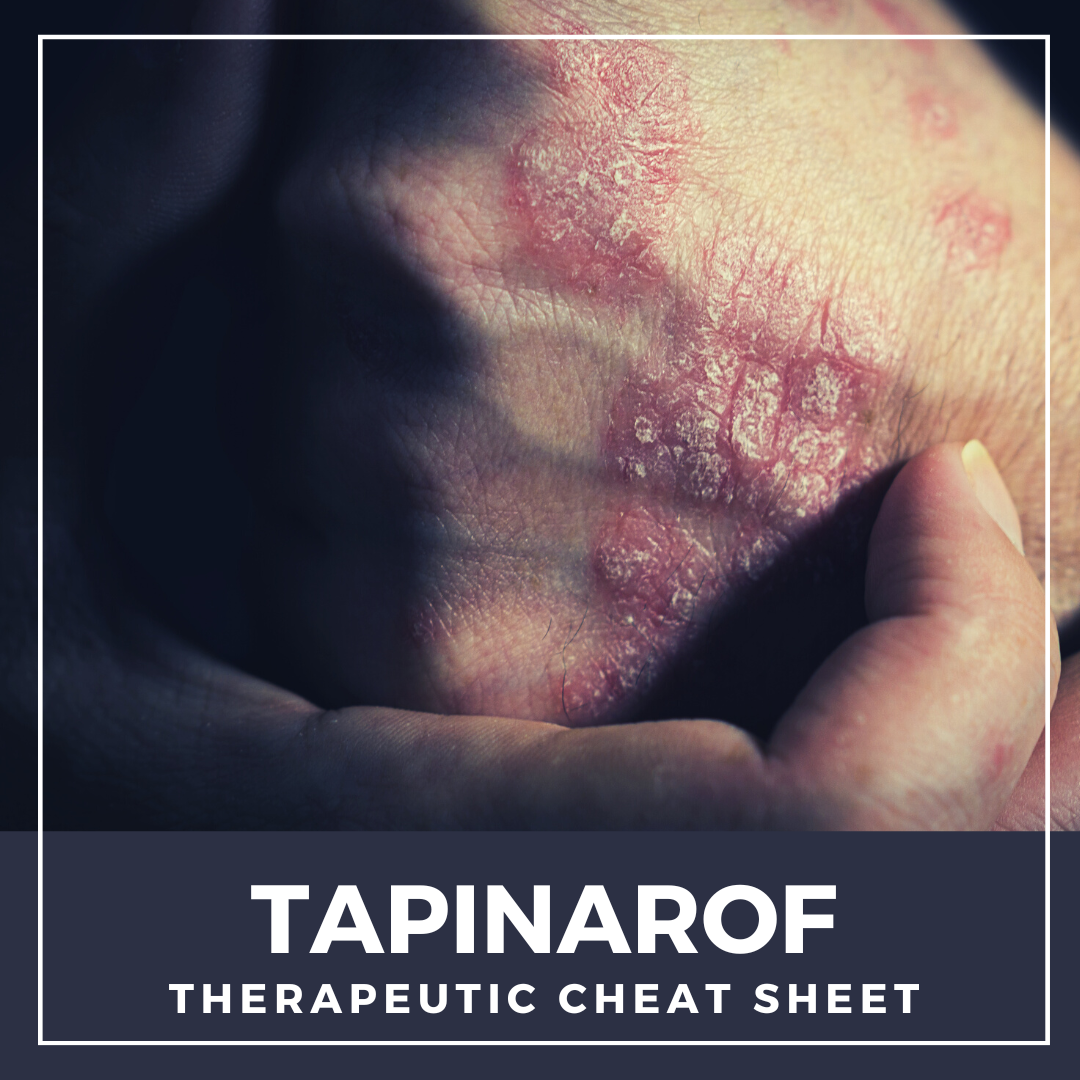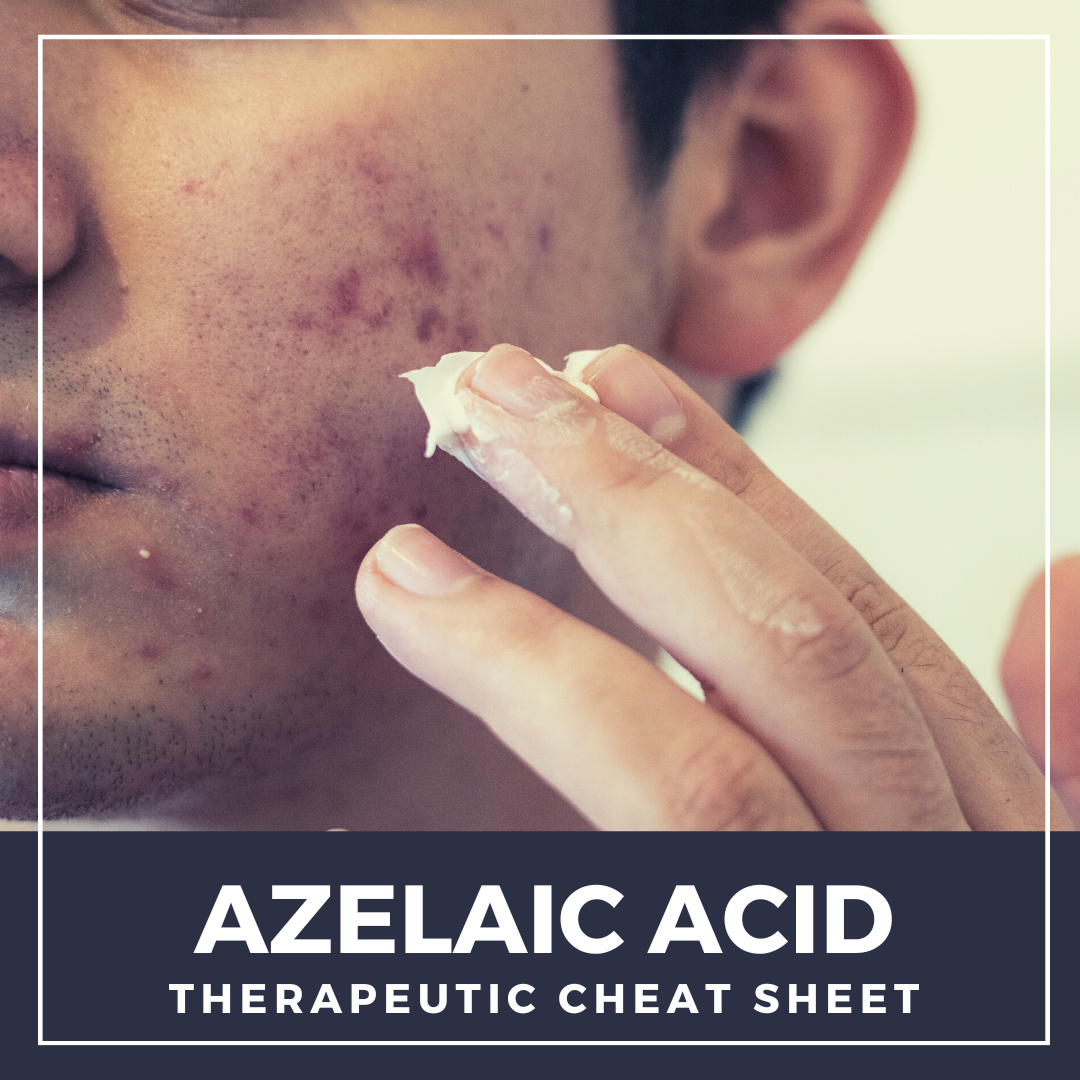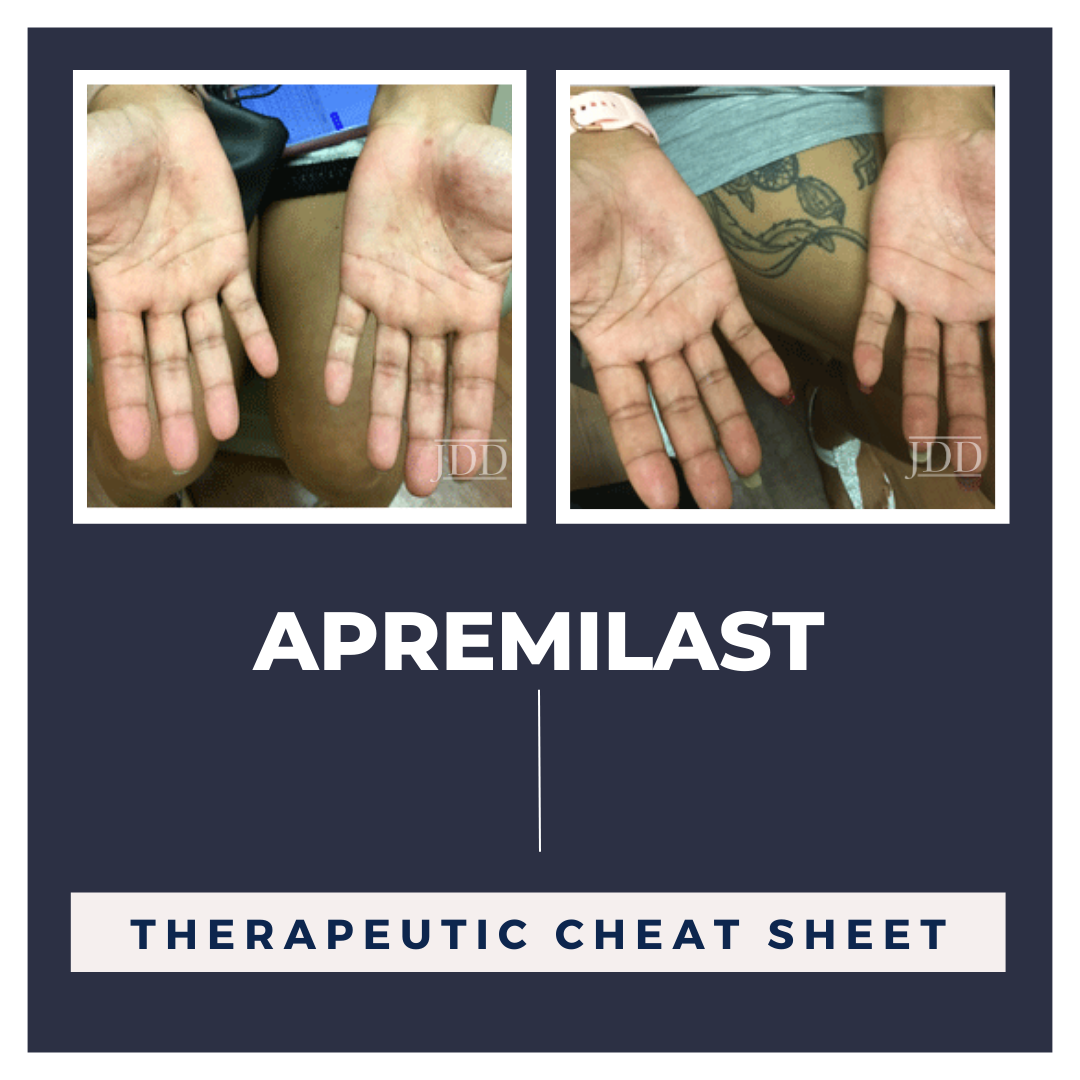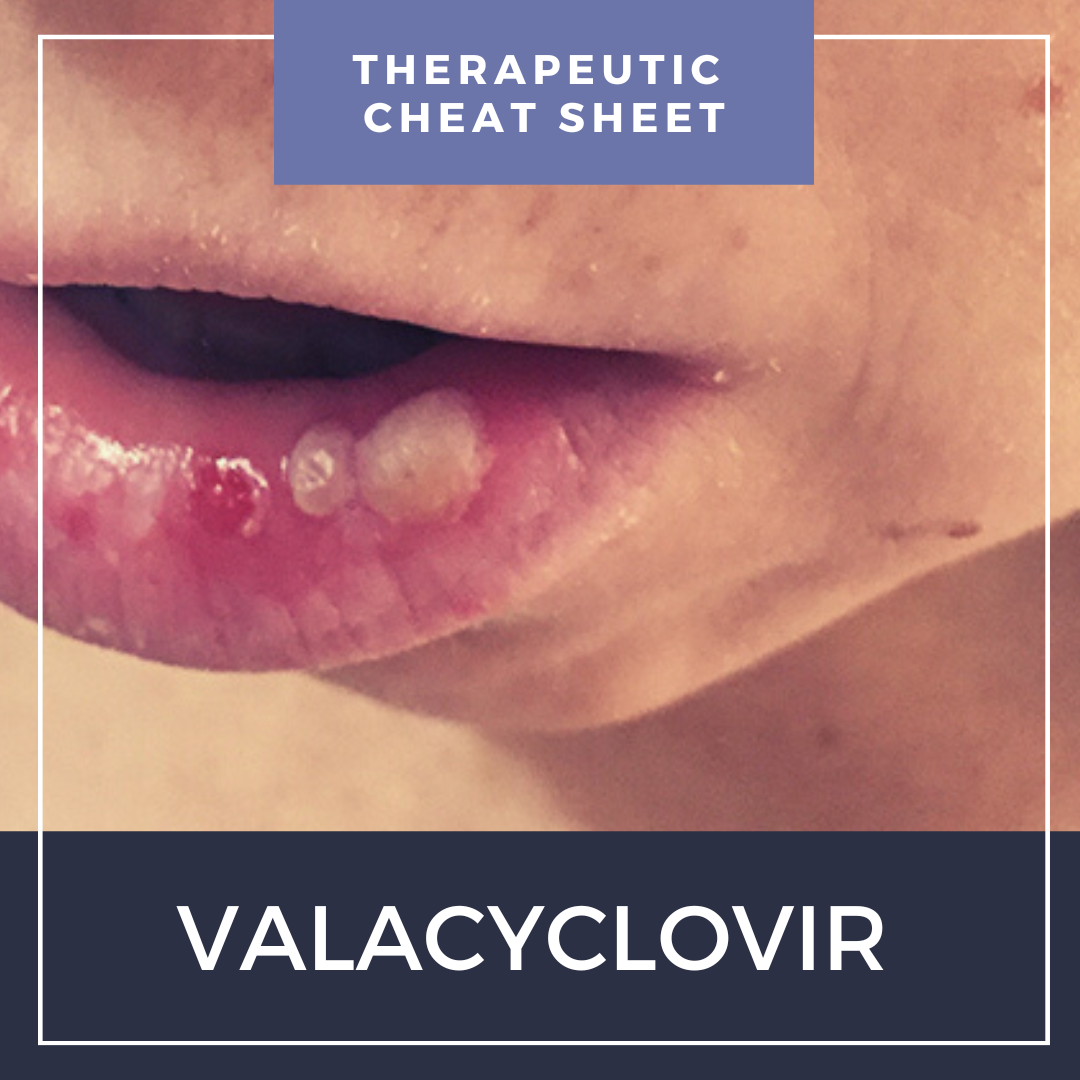Tapinarof Therapeutic Cheat Sheet
 Tapinarof cream is a non-steroidal topical medication that was recently FDA approved in 2022 for the treatment of mild, moderate, or severe plaque psoriasis in adult patients. As biologic medications have continued to grow and become exceedingly present in the treatment of moderate to severe psoriasis, there has been very minimal, if any innovation in the space of topical treatments. Additionally, …
Tapinarof cream is a non-steroidal topical medication that was recently FDA approved in 2022 for the treatment of mild, moderate, or severe plaque psoriasis in adult patients. As biologic medications have continued to grow and become exceedingly present in the treatment of moderate to severe psoriasis, there has been very minimal, if any innovation in the space of topical treatments. Additionally, …
 Tapinarof cream is a non-steroidal topical medication that was recently FDA approved in 2022 for the treatment of mild, moderate, or severe plaque psoriasis in adult patients. As biologic medications have continued to grow and become exceedingly present in the treatment of moderate to severe psoriasis, there has been very minimal, if any innovation in the space of topical treatments. Additionally, …
Tapinarof cream is a non-steroidal topical medication that was recently FDA approved in 2022 for the treatment of mild, moderate, or severe plaque psoriasis in adult patients. As biologic medications have continued to grow and become exceedingly present in the treatment of moderate to severe psoriasis, there has been very minimal, if any innovation in the space of topical treatments. Additionally, … 

 Azelaic acid is a topical therapeutic agent which is FDA approved to treat papules and pustules of mild to moderate rosacea and mild to moderate acne vulgaris. It was first approved by the FDA in 1995 and since its approval, has been used for many off-label conditions including disorders of hyperpigmentation. Its utility in various conditions can be attributed to its anti-microbial, anti-inflamm …
Azelaic acid is a topical therapeutic agent which is FDA approved to treat papules and pustules of mild to moderate rosacea and mild to moderate acne vulgaris. It was first approved by the FDA in 1995 and since its approval, has been used for many off-label conditions including disorders of hyperpigmentation. Its utility in various conditions can be attributed to its anti-microbial, anti-inflamm …  Apremilast (OTEZLA®) is a twice daily oral medication that is FDA approved for adults with plaque psoriasis, psoriatic arthritis and oral ulcers associated with Behçet’s Disease.1 This drug is being extended as an off-label treatment to target inflammation in a number of different conditions. This Therapeutic Cheat Sheet will focus on apremilast and its applications for different dermatologica …
Apremilast (OTEZLA®) is a twice daily oral medication that is FDA approved for adults with plaque psoriasis, psoriatic arthritis and oral ulcers associated with Behçet’s Disease.1 This drug is being extended as an off-label treatment to target inflammation in a number of different conditions. This Therapeutic Cheat Sheet will focus on apremilast and its applications for different dermatologica …  Herpesviridae is a family of ubiquitous viral pathogens leading to a wide array of diseases in humans, and includes viruses such as herpes simplex virus 1 (HSV-1) and 2 (HSV-2), herpes/varicella zoster virus (VZV), Epstein-Barr virus (EBV), cytomegalovirus (CMV) and herpes viruses 6 (HHV-6), 7 (HHV-7) and 8 (HHV-8). Mucocutaneous herpetic infections are frequently encountered in dermatology, and s …
Herpesviridae is a family of ubiquitous viral pathogens leading to a wide array of diseases in humans, and includes viruses such as herpes simplex virus 1 (HSV-1) and 2 (HSV-2), herpes/varicella zoster virus (VZV), Epstein-Barr virus (EBV), cytomegalovirus (CMV) and herpes viruses 6 (HHV-6), 7 (HHV-7) and 8 (HHV-8). Mucocutaneous herpetic infections are frequently encountered in dermatology, and s …  As dermatologists, pruritus (or itch) is one of the most frequent symptoms that we encounter. The broad spectrum of itch severity in patients with various dermatologic conditions suggests a need for a host of “tools” or medications that dermatologists should have in their toolbox. In this publication, we continue our Therapeutic Cheat Sheet series by highlighting the uses of Doxepin in dermato …
As dermatologists, pruritus (or itch) is one of the most frequent symptoms that we encounter. The broad spectrum of itch severity in patients with various dermatologic conditions suggests a need for a host of “tools” or medications that dermatologists should have in their toolbox. In this publication, we continue our Therapeutic Cheat Sheet series by highlighting the uses of Doxepin in dermato …